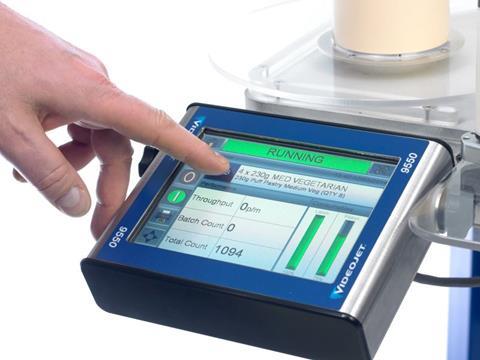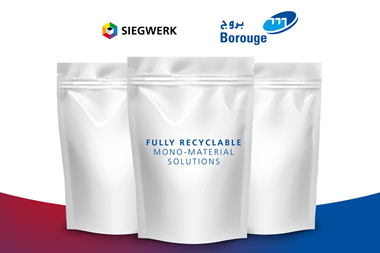
Bob Neagle, Global Business Unit Manager for LPA at Videojet, answers a series of questions in order to shed some light on the labelling challenges manufacturers face and how best to deal with them.
Clear and accurate case labeling in the food, beverage and pharmaceutical sectors is critical. The regulatory landscape for these industries in constantly evolving, and the ability to track and trace products throughout the length of the supply chain is imperative. In order to meet demand and remain profitable, manufacturers must also keep a close eye on uptime, focusing on areas that could lead to potential stoppages and optimising these once identified. One such area has historically been at the labeler, but solutions available on the market today can ensure that worries in this section of the line are a thing of the past.
Q: What are the common challenges faced by manufacturers when it comes to print and apply labeling (LPA)?
These can be broken down into three main areas, the first of which is service and maintenance. Traditional LPA systems have largely remained unchanged for the last two decades and affix labels to packaging via an air-driven tamp applicator, connected to a separate print engine. These have a significant number of working parts and require frequent manual adjustments by operators to ensure labels are correctly applied, leading to line stoppages and potentially unscheduled downtime if these adjustments are not correctly carried out. By using Videojet Intelligent MotionTM technology we can monitor input from sensors within the system, which allows it to make several automatic adjustments per second, negating the need for operator involvement and allowing the line to run almost continuously.
The second challenge is that of misapplied and missed labels. It stands to reason that a barcode that has been incorrectly applied or missed altogether will be impossible to read. Traditional LPA systems frequently suffer from wrinkled labels, jams and labels that stick to the tamp pad as opposed to the box. By designing the print head and the applicator to work together, we can achieve very high speeds without the need for a tamp mechanism in the majority of situations. Using the momentum of the box as it passes by, direct application (Direct Apply) by simply rolling labels on means that the use of plant air is no longer necessary, significantly reducing running costs and ensuring no labels are missed at the high speeds required in today’s demanding production environments.
Finally, with strict regulations governing which information must be included on packaging, manufacturers need to know that what they are printing is 100% accurate. In the US food and beverage industry, for example, the Produce Traceability Initiative requires lot and batch numbers to be included, as does the Food Safety Modernisation Act (FSMA). Without this information, major retailers - such as Walmart, for example - will not consider doing business with you. What this means in terms of labeling is that you can no longer pre-print what is on that label, so the ability to change what is printed on the label accurately is paramount. In order to enable manufacturers to adhere to applicable standards, the latest LPA systems are equipped with the Videojet CLARiTY™ touch screen interface. Features include intuitive job selection, comprehensive feedback and diagnostics, which enable human error to be minimized. Through effective code assurance, manufacturers can ensure the correct codes are printed consistently, enabling them to remain compliant and to minimize unscheduled downtime.
What advances have been made in LPA technology?
When our latest machine, the Videojet 9550, was launched we introduced a product that had true differentiation - something radically different to other applications available on the LPA market. The challenges we have mentioned above we identified through speaking to the industry, listening carefully to the challenges and then developing solutions accordingly. Existing printers were highly mechanical, needed constant adjustments and would frequently break. However, the alternative to existing LPA systems was to have a person manually apply the label to packaging.
The true advance for us is our patented direct apply application method, which enabled us in the case of the 9550 to reduce more than 80% of the wear parts and eliminate manual adjustments altogether – something which, if mentioned five years ago in conjunction with the fact that no plant air is needed, would have been difficult to comprehend.
Since its launch in 2014, the 9550 has been adapted to operate in several operating environments in order to provide for the full range of market needs. The direct apply method, for example, has been adapted for corner wrap application, which uses a single roller wipe action to wrap case corners. This eliminates the need for an applicator arm in this instance.
Of course there are operating conditions that simply do not support direct apply methods, and in these cases the 9550 has been adapted to bring the same Intelligent MotionTM benefits to a more traditional style of label application. The Front of Pack applicator, for example, uses a top-mounted swing arm with 305mm reach, and as the system is precisely controlled and constantly adjusted, downtime commonly associated with jammed or snagged labels can be significantly reduced. For applications where height variation occurs, there is also a version that utilises a telescopic tamp.
Another significant advance is having a single integrated touchscreen user interface (UI), as opposed to separate UIs for both the applicator and the printer. Through having one UI you drastically simplify set up and daily operations as you only have to familiarise yourself with one interface. The job files are stored directly on the UI itself in an on-board database and do not require a PC connection each time an operator needs to upload a new job. This is a far more efficient process which ultimately makes a significant contribution to uptime.
What are the primary benefits of the latest LPA printers?
There are several benefits linked to the technological advancements in LPA printers, the first being improved Total Cost of Ownership (TCO). Three things intrinsically linked to TCO are availability, performance and quality. Will your LPA system be ready to do its job when you need it to, at the speeds you require and to the quality levels that you and your customers demand? With the improvements we have outlined with regard to the 9550, the answer is a resounding yes, allowing as it does a production speed of 150 packs per minute (for typical 4” x 6” GS1 barcode labels) at a consistently high quality.
Maximising uptime is of the essence in fast-paced production environments. A line that is not running is not earning money, but there are certain elements that will require attention that cannot be avoided – for example, ribbon and label replacements. By simplifying the web path on the 9550, training is very straightforward for operators and both label and ribbon changes can be completed within just 60 seconds. In addition, the system has a patented ribbon save feature, which raises the printhead when it is not printing, minimising ribbon usage and its associated costs.
Enhanced usability, facilitated by the easy-to-use UI, is a big plus point. It is a familiar interface for Videojet systems, therefore any operators using other Videojet coding equipment can quickly adopt this. Multiple code assurance features make it very difficult to enter erroneous codes, which significantly reduces the risk of product waste, or worse – product recalls. Supply chain integrity is everything, so ensuring the correct codes are placed every time is paramount.
All of these benefits combine to give manufacturers a system that is highly efficient, easy to operate and above all offers attractive return on investment (ROI) figures.
Where are you seeing the greatest demand for LPA systems?
End-of-line applications are the main focus for LPA – essentially applications where primary packages are placed into cases in a near continuous process. However, there is often a need to label larger POS packaging, or in some cases larger primary packages, such as clamshells for strawberries for example.
In geographical terms, automated labeling is most prevalent in developed economies such as North America and Western Europe. However, there are applications all over the world and some of the high growth economies offer the opportunity to convert from manual labeling.
Most industries will have a need to print on to a shipping case, but due to regulatory requirements this is a must for the food, beverage and pharmaceutical industries. These sectors are driven by high demand and therefore need to maintain high uptime and throughput. They cannot afford to have bottlenecks caused by lack of labeler availability and so are increasingly looking for a solution that is reliable, fast and requires minimal maintenance.
More info:










